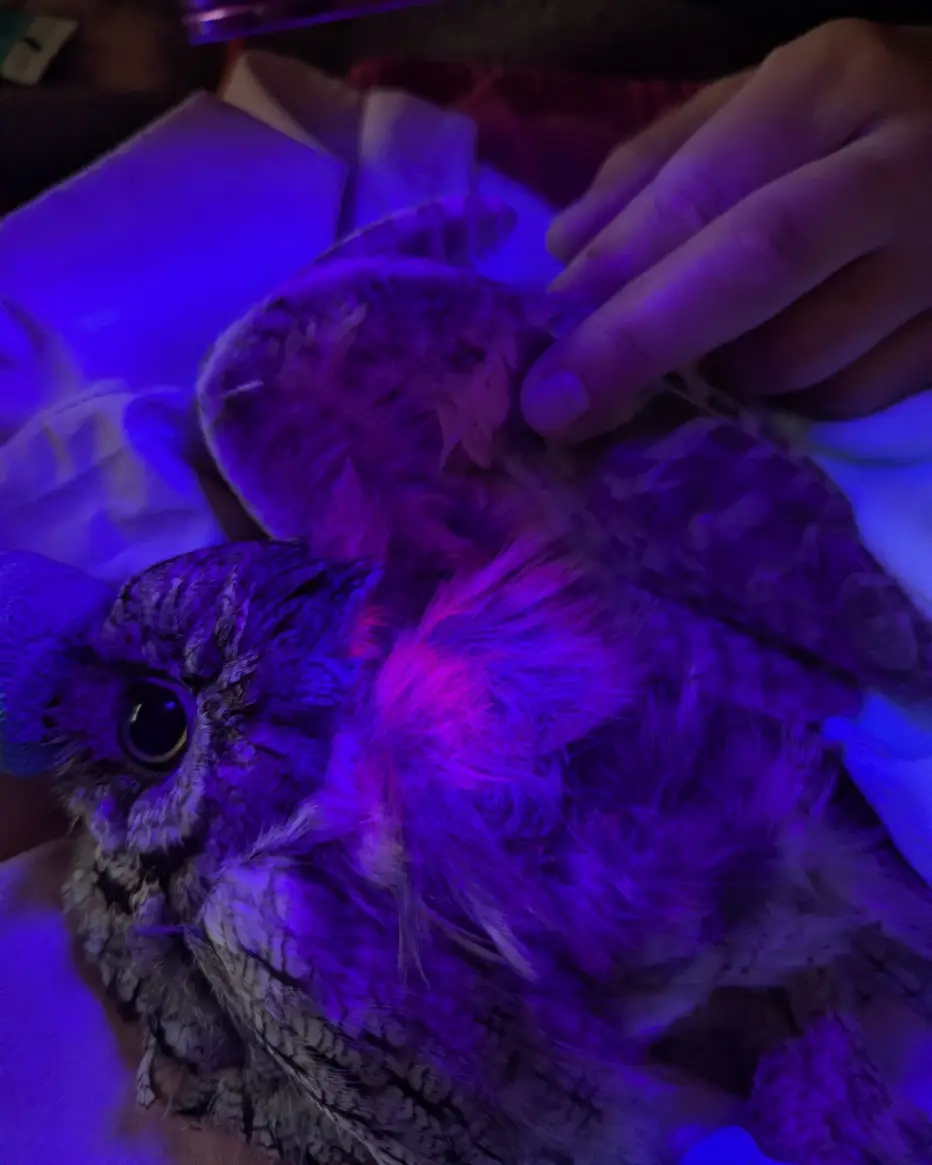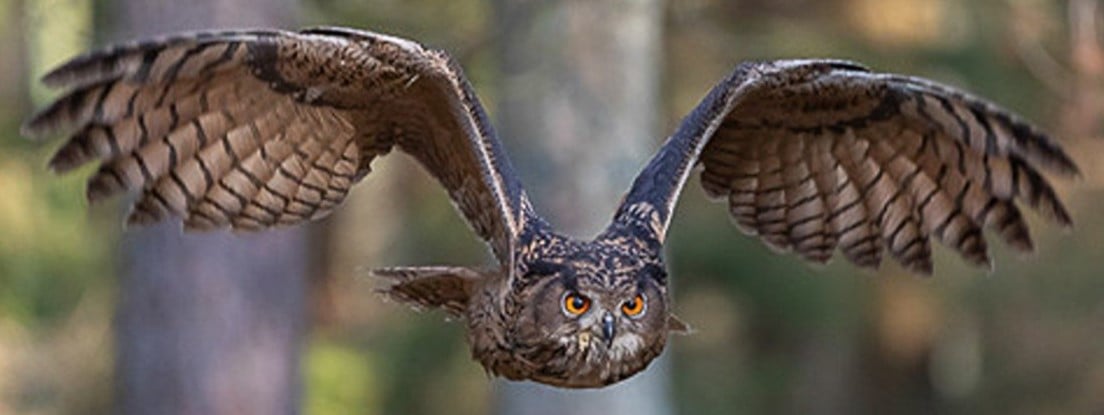We've covered this a few times already, but it's usually very popular, plus each write upbhas its own details. This post even has a second link to more info and photos! Check it out, and learn about this fun and unique methodology!
From New Mexico Wildlife Center
On Wednesdays we wear pink. Well, really, this Western Screech-Owl patient wears pink every day, we just can't see it without a black light!
Some birds, including most owls, have pigments called porphyrins in their feathers. Human eyes can't detect those pigments in normal lighting conditions, but under an ultraviolet (or "black") light, porphyrins fluoresce and appear bright pink or red to our eyes. Unlike humans, owls can see ultraviolet light, which helps them navigate in the dark and notice visual signals like the fluorescence in feathers.
Porphyrins fade over time, though, so older feathers lose their fluorescence and newly-grown feathers glow especially brightly. Using a black light, scientists can see when an owl is a very young bird with brand new flight feathers, because all of the owl's primary feathers will fluoresce about the same shade of bright pink! It gets better, though: many owl species only molt some of their primary feathers each year, replacing them all over the course of a 2- or 3-year cycle. Some of those species are fairly predictable in the order in which those feathers are molted and replaced. Knowing this, then, a black light can reveal exactly how old some owls are, at least for the first few years of their lives!
In these photos, the light is not shining on the owl's primary feathers, so we'll let this bird keep their age a secret. Using an ultraviolet light to determine a bird's age is part of the data collection process at owl banding stations, where researchers usually classify the owls' ages as HY (hatch year), SY (second year), or ASY (after second year). This post from a banding station in Michigan shows what Northern Saw-whet Owls of different ages look like under ultraviolet light!


How old would you guesstimate this superb owl is?
Even if the feathers were lit up, I don't know much about molting patterns.
What I do know is Saw Whets migrate every year, young ones tend to migrate further, but there also looks to be year round resident Saw Whets in NM so this one could be from bear anywhere.
Nesting season is May/June and they take a out 2 months to grow up. They live an average of 3 or 4 years, so the best result I can give you is most likely 0.5-4 years old.
So basically the equivalent of guessing a person is between 18 and 65, but I did give you some quick facts so that's almost a little helpful...